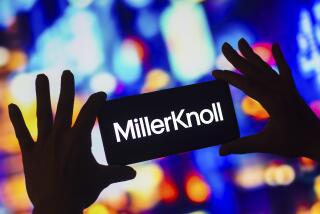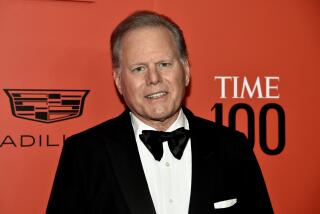High-Paid Executives May Be a Bargain
- Share via
Five years ago, Amdahl Corp. was on the ropes in its battle with IBM in mainframe computers, powerful multimillion-dollar machines designed for the most demanding data-processing tasks. The firm was losing business--and its good reputation--with the botched introduction of a new line.
Today, armed with a strong balance sheet and a new line of technically superior and more popular IBM-compatible mainframes, the firm is regaining its stature and luring back investors. Its stock has gone from around $12 in late 1985 to as high as $50.125 last year before the October crash and to $44.75 as of Friday.
One person in a position to take big advantage of the stock run-up was Eugene R. White. By exercising stock options, the Amdahl vice chairman propelled his 1987 earnings to $8.85 million, a hefty sum over his cash compensation of $683,000. That gave White the distinction as the highest-paid executive of a publicly held, California-based company in 1987.
At least Wall Street’s not complaining.
White is one of three executives largely credited with engineering the turnaround at Sunnyvale-based Amdahl, says Stephen Cohen, a vice president and industry analyst at Gartner Securities in Stamford, Conn. The other two also were highly rewarded last year. Chairman and Chief Executive John C. Lewis ranked sixth on The Times’ list with $4.48 million, while President E. Joseph Zemke ranked 49th with $1.3 million.
“If you look at a list of highly paid executives, many are being rewarded far out of proportion to what their shareholders are getting,” says Jeffry Canin, technology analyst at the Hambrecht & Quist investment firm. “I don’t think you can make that case with Amdahl. The company has done well, and it (the high compensation) is deserved.”
Although still far smaller than IBM, Amdahl “is doing extremely well in the marketplace. They have a lot of momentum,” Cohen says.
Customer Enthusiasm
Large corporations are seeking Amdahl mainframes as cost-effective alternatives to IBM machines. Amdahl claims that its latest entry in the mainframe computer wars, the 5990 model, is faster than any other mainframes in the market. The machines are a “blockbuster,” Cohen says. “It will continue their momentum for the next several years.”
Amdahl’s earnings reflect customer enthusiasm. Its profit rebounded to $142 million last year, more than triple those of the year before. Net income for the first quarter of this year surged 71% to $43.2 million.
White stepped down as chairman in May, 1987, and now serves as vice chairman, no longer involved in day-to-day decisions.
Similar kudos from Wall Street go to the second- and third-ranked executives: James W. Conte and Robert L. Green, chief executive and chairman, respectively, of Laguna Hills-based Community Psychiatric Centers. They earned $8.57 million and $6.88 million, respectively, thanks largely to gains from exercising stock options.
The company, the largest publicly owned operator of acute care psychiatric hospitals, enjoys one of the fastest growth rates in the health-services industry and is nearly debt free, unlike most health care companies.
Earnings have risen steadily over the years, totaling $60 million in its latest fiscal year ended Nov. 30, 17% above the prior year.
“They (Conte and Green) certainly have done a fantastic job of running this company. They are highly esteemed in the industry,” says Joyce Albers, health-services analyst at First Boston.
The company, founded in 1962 by Conte and Green, is undergoing a vigorous expansion program to take advantage of growing demand nationwide for mental health care, Albers says. The firm, which already owns and operates 39 psychiatric hospitals nationwide, including 10 in California, is expected to add four new hospitals this year and expand three existing units. It also provides alcoholic treatment services, operates a chain of kidney dialysis centers and owns a business offering home health care services.
However, concerns about increased competition and resulting lower profit margins have helped hold Community Psychiatric’s stock off from its pre-crash highs. The issue, trading at less than $20 in early 1986, rose to $32.25 last year before the crash but on Friday closed at $21.625.
More to Read
Inside the business of entertainment
The Wide Shot brings you news, analysis and insights on everything from streaming wars to production — and what it all means for the future.
You may occasionally receive promotional content from the Los Angeles Times.










